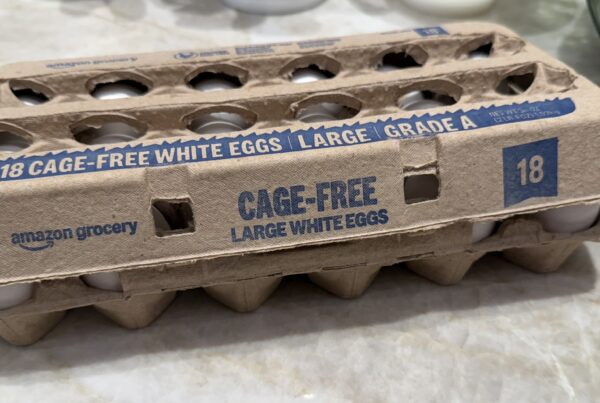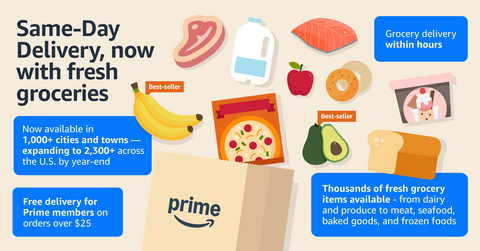By Joel Groover
Ramping up convenience via smaller stores and showrooms.
In response to the fiscal crisis of 2008, many retailers focused on slashing prices in their existing stores or even launching off-price spinoffs. But another strategy — shrinking store formats and merchandise offerings in a bid to make shopping more convenient — is gaining ground around the globe, experts say. “When both Macy’s and Lord & Taylor have value concepts, you know value is saturated,” said Rachel Elias Wein, founder of WeinPlus, a consultant firm specializing in competitive strategies for real estate owners and retailers. “People have been trained to continuously get 50 or 40 percent off. The alternative is convenience.”
The trend is perhaps most visible in food retailing. According to an April 2015 Nielsen report titled The Future of Grocery: E-commerce, Digital Technology and Changing Shopping Preferences Around the World, consumers are shifting toward smaller, easier-to-shop grocery formats. The 33-page report uses data from surveys of 30,000 consumers across 60 countries and other Nielsen market research. “Across the globe, we’re seeing the rise of proximity retailing,” said Patrick Dodd, Nielsen’s president of global retail, in the report. “In the eyes of global shoppers, small and simple is beautiful right now. While there is some growth for large stores, the real winners are mini markets, small supermarkets and convenience stores.”
According to Nielsen, the growth of smaller-format stores tends to be strongest in developed economies. Nonetheless, the authors write, “convenience and drug stores demonstrate strong growth potential in both developed and developing markets, which underscores consumers’ desire to use brick-and-mortar stores for quick trips and special (often urgent) purchases.”
Whole Foods Market’s 365 by Whole Foods Market spinoff typifies this trend, according to consultant Paco Underhill, CEO and founder of Envirosell, a consumer-behavior research firm. The roughly 30,000-square-foot 365 by Whole Foods Market stores offer what Whole Foods says is a “curated” — meaning streamlined — product selection dominated by the chain’s 365 private-label brand. According to a press release, the company has signed eight leases for the smaller-format concept thus far, with the first stores opening this year and up to 10 additional ones set for next year. “In the United States, as in Europe, the fastest-growing chains are Aldi and Lidl,” Underhill said. “The idea is to have a smaller, curated store with your own branded products in it. Today people do not see house brands as a compromise. Part of what is driving the convenience factor is the recognition that we have reached the apogee of the big box.”
Cavernous stores filled with thousands of products can actually be inconvenient for some shoppers by requiring longer drives and overwhelming them with too many choices, says Jeff Green, who heads an eponymous retail consulting firm in Phoenix. By contrast, he says, smaller-format stores such as Trader Joe’s and Sprouts are all about a quicker and easier experience. Within the grocery industry, in fact, some even speculate about a future in which smaller stores supplant traditional supermarkets, according to Jeffrey S. Edison, a principal and the CEO of Phillips Edison & Co., which specializes in boosting the value of underperforming, grocery-anchored centers. “We’re not big believers in the model, but the idea is that the center of today’s supermarket will basically go away,” Edison said. “You’ll buy your Cheerios, Campbell’s Soup and other commodity items online, and then go to smaller-format stores to buy your perishables, prepared foods and meats.”
Fashion, electronics and other nonfood chains are also using so-called curated merchandise selections to make shopping more convenient, observers say. Wein cites British fashion retailer Ted Baker, which operates some 350 stores and concessions across 24 countries. “Ted Baker is my new -favorite store,” she said. “They have one of each size on the rack, with plenty more in the back for you. The customer service is fantastic, but the point is, you can breathe and see. It’s much more of a boutique experience.” By comparison, shopping at some department stores can seem like a chore, Wein says. “You walk through and the racks are just packed, with clothes falling off the hangers and onto the floor. If there are 10 places in a store where you can find a black skirt, that is not convenient for anyone.”
Though the specialty sector does not typically rely on convenience-oriented strategies, the showroom-style stores of such chains as Bonobos, Pirch, Restoration Hardware and Warby Parker highlight the potential benefits of making shopping easy by eliminating clutter, Wein says. Restoration Hardware’s new RH showrooms feature multiple floors of carefully arranged furniture, lighting and other home furnishings — all of it sold as delivery-only, with no backroom for inventory. “RH, the new Restoration Hardware format, truly looks like a home you would never want to leave,” Wein said. “Affluent shoppers — RH’s target customers — can walk in and say, ‘I want all of this.’ That’s convenient. Customers don’t have to run around town and deal with an interior designer. They can just walk in, love it and have it.”
Formerly online-only retailers like Bonobos and Warby Parker, in particular, are adept at running showrooms in ways that please the customer, says Green. “They’re already accustomed to delivering all of the merchandise,” he said. “We’re going to see this [showroom model] more and more as other online retailers go into the brick-and-mortar space.” Bonobos and Warby Parker take convenience a step further by focusing on personalized service as well, Green says. “Convenience is more than just your proximity to a store,” he said. “It’s also about how much interaction you have with the salesperson.”
The showroom model is certainly not appropriate for every retailer, cautions Jerry Hoffman, founder of Hoffman Strategy Group, an urban retail and integral-use consulting firm. “When people go shopping, they often still want to leave the store with their items,” Hoffman said, “but if you’re doing something like tailored clothing, then the showroom is a brilliant model.”
In adopting smaller store formats with fewer items on display, retailers also risk losing out on revenue from impulse purchases, notes Underhill. “Part of what we know is that in the grocery store and mass-merchandiser sectors, half of what we buy we had no intention of buying when we walked in the door,” he said. Even something as seemingly benign as removing clutter can, in some cases, carry unintended consequences, Underhill says. “If you stop somebody on the street or in the store and ask whether they like clutter,” Underhill said, “it is sort of like saying, ‘Do you beat your wife?’ The answer is always no. But research shows that once you take the clutter out, sales decline.”
In its own way, in other words, a “stack it high” merchandising approach can communicate messages about the balance between price and convenience at a given store. For Nick A. Egelanian, president of SiteWorks Retail, an Annapolis, Md.–based consultant firm, JCPenney’s failed reinvention is a cautionary tale about the need for such messages to be easily understood by consumers. “When Ron Johnson went to Penney [as CEO], he moved to everyday low prices trying to compete with the Walmarts and Targets of the world,” Egelanian said. “But Penney was never going to be as convenient as Walmart and Target, which are positioned much closer to the customer.”
Moreover, Egelanian observes, Johnson’s focus on bringing specialty store-in-store concepts to Penney sent a contradictory message — namely, that the chain aimed to focus on specialty retail, which is typically associated with higher prices. “Trying to be something that appeals to the discretionary income of the customer, that didn’t work, either,” Egelanian said. “If it doesn’t compute, you don’t go. Johnson confused customers, and they stopped going.”

![165962462 [Converted]rev. ai](https://weinpl.us/wp-content/uploads/2016/02/COVER1-copy-300x168.jpg)







